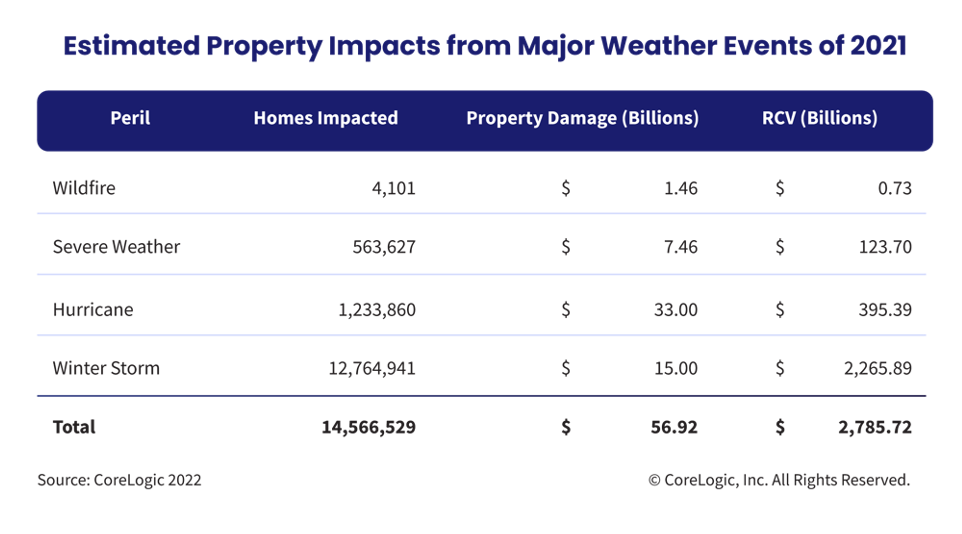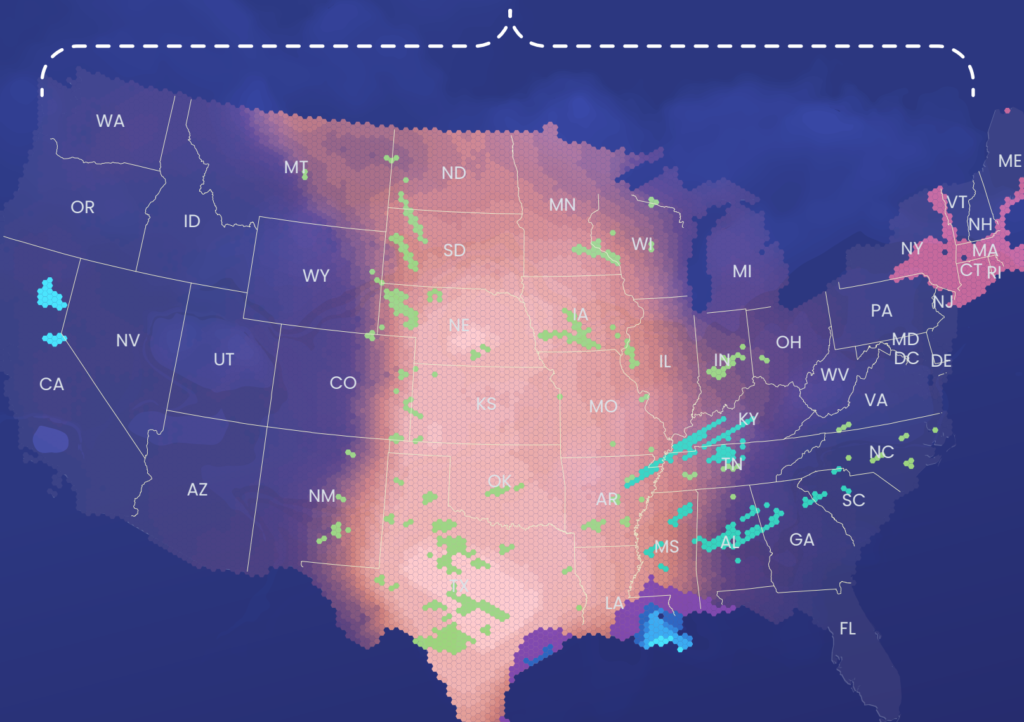
This year’s report analyzed thirteen major hazard events of 2021 — from hurricanes and severe weather such as tornados and hailstorms to wildfires and winter storms — to understand how these events have disproportionate yet wide-sweeping effects on properties.
Using its advanced risk modeling technology, CoreLogic analyzed over 120 million residential structures in the U.S. and took a closer look at defining impact. Property impact varies by event — while a wildfire has the potential to consume an entire property, there may also be damage caused by smoke, ash and odor to the neighboring structures that remain standing. While risk comes in various degrees, any sort of property damage can have a compounding effect on the homeowner and economic stability.

“By leveraging granular data for the increasing frequency and severity of catastrophes, we are able to see that more than 14.5 million homes were impacted to some degree by natural hazards in 2021. That’s about 1 in every 10 homes in the United States,” said Tom Larsen, CoreLogic’s principal, Industry Solutions. “Insurers and lenders can leverage the latest technologies and work cross-functionally to better understand this risk, protect homeowners and enable faster recovery times.”
Natural disasters are increasing in frequency and severity, impacting regions underprepared to handle an economic disruption, job displacement and the destruction of real estate assets. Community members are often unable to pay their mortgages or afford reconstruction costs. The report analyzes an area like Houma, Louisiana, which was hit head-on by Hurricane Ida, a category 4 hurricane, in August 2021. At the time of impact, delinquency rates hovered around 7.4%. The following month, the delinquency rate nearly doubled to 13.3% and hit 13.5% in October.
While recovery after a natural catastrophe continues well after the walls are rebuilt, it’s important for insurers, mortgage and financial professionals to harness technology and better anticipate the possible severity of potential disasters. Such preparedness can be meaningful to protecting homeownership, insurer portfolios and shielding the housing stock from collapse.
To download the full 2021 CoreLogic Climate Change Catastrophe Report, which includes maps, charts and images, visit this link.








